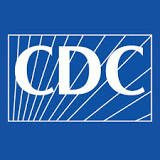Centers for Disease Control and Prevention (CDC) officials announced that the number of girls and boys aged 13-17 years receiving human papillomavirus (HPV) vaccine remains low despite a slight increase in vaccination coverage since 2012, according to data from CDC’s 2013 National Immunization Survey-Teen.
HPV vaccine prevents various forms of cancer, but HPV vaccine remains underutilized, officials said. The 2013 data reveal a substantial gap between the number of adolescents receiving tetanus, diphtheria and pertussis (Tdap) vaccine and the number receiving HPV vaccine. CDC estimates that only 57 percent of adolescent girls and 35 percent of adolescent boys received one or more doses of HPV vaccine. However, nearly 86 percent of adolescents had received one dose of Tdap vaccine.
“The high coverage rate of Tdap vaccine shows us that it is certainly possible to reach our goal of vaccinating 80 percent of adolescents against cancers caused by HPV,” said Dr. Anne Schuchat, assistant surgeon general and director of CDC’s National Center for Immunization and Respiratory Diseases.
According to the CDC, all preteens need one dose of Tdap vaccine, one dose of meningococcal vaccine, and three doses of HPV vaccine to be fully protected against serious diseases, including HPV cancers. A second dose of meningococcal vaccine is needed at age 16.


















